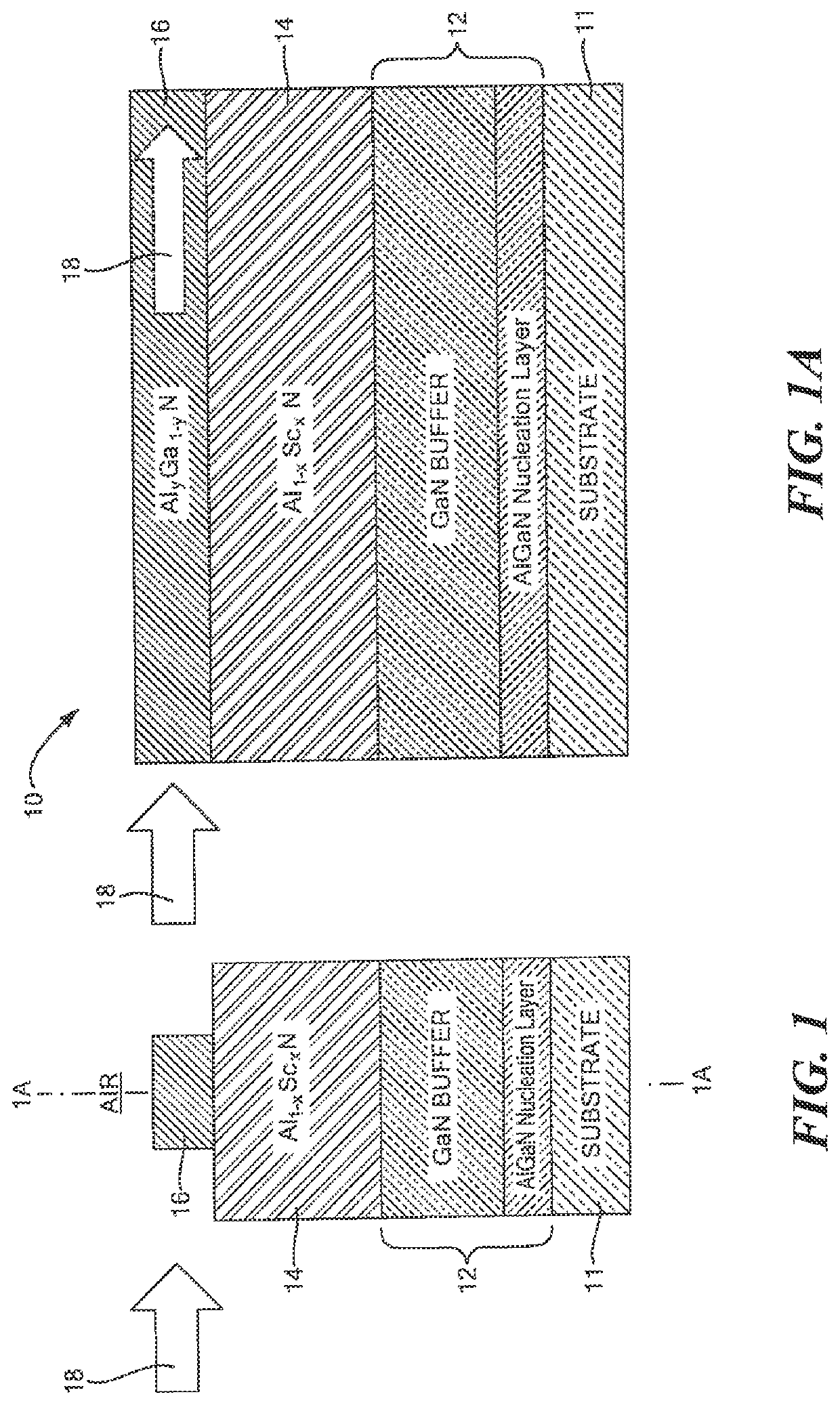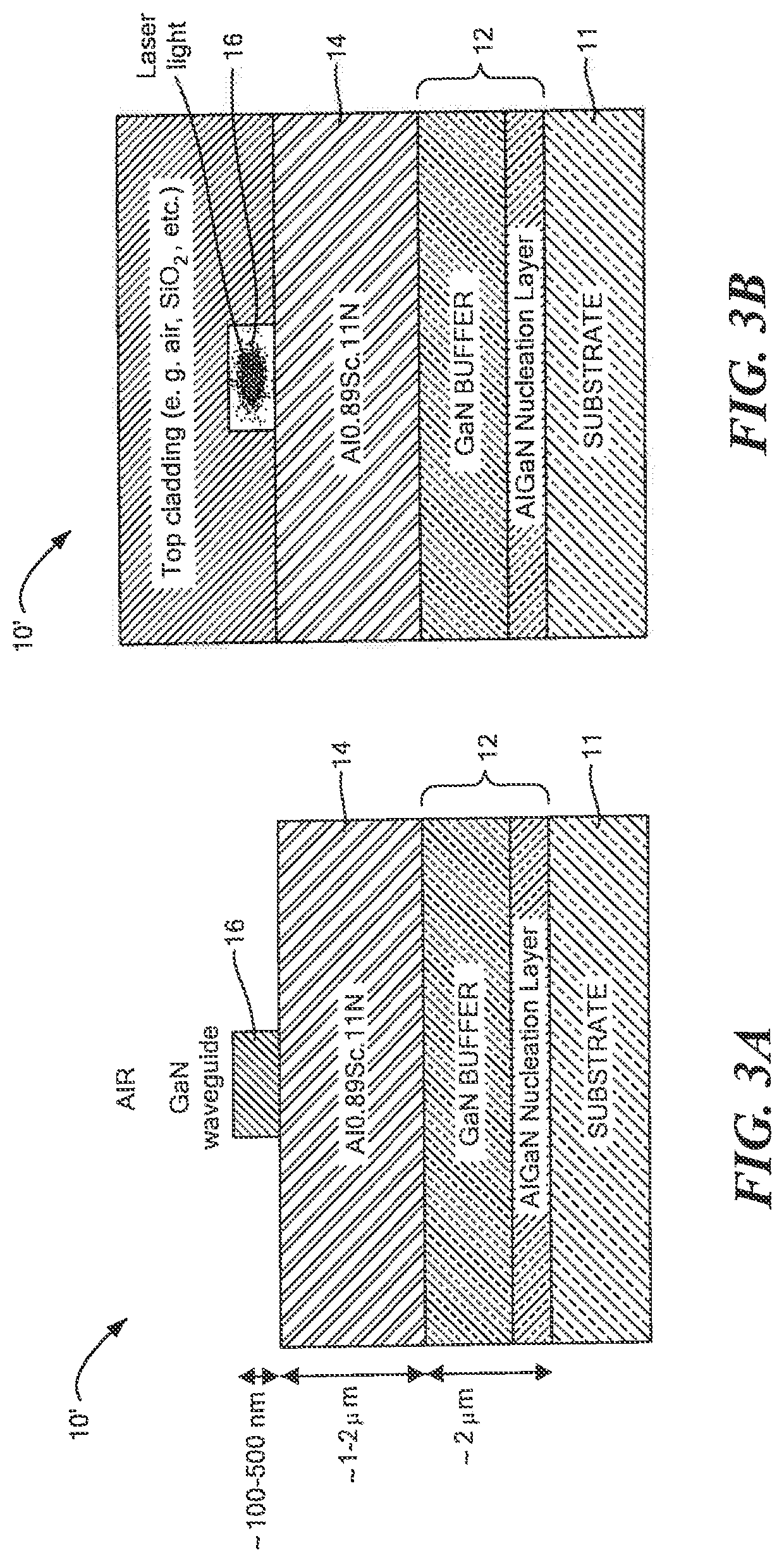Photonic and electric devices on a common layer
a technology of electric devices and photonic modulators, applied in semiconductor lasers, non-linear optics, instruments, etc., can solve the problems of difficult integration with electronic devices and circuits of group iii-n, limiting the growth thickness of photonic waveguide layers, and relatively high loss, so as to achieve the effect of significantly improving the efficiency of photonic modulators and lasers
- Summary
- Abstract
- Description
- Claims
- Application Information
AI Technical Summary
Benefits of technology
Problems solved by technology
Method used
Image
Examples
Embodiment Construction
[0064]Referring now to FIGS. 1 and 1A, a photonic device 10, here a photonic waveguide, is shown having: a substrate 11, here a single crystal substrate, for example, Silicon Carbide (SiC), an AlGaN nucleation layer / GaN buffer layer 12 on the substrate 11, the AlGaN nucleation layer portion of layer 12 serves to allow the GaN buffer above it be fully relaxed. This nucleation layer / buffer layer 12 accommodates all the mismatching of III-N layers to the substrate, here for example the SiC substrate 11; a cladding layer 14, here Aluminum Scandium Nitride (Al1-xScxN), formed on an upper surface of the AlGaN nucleation layer / GaN buffer layer 12 formed in a manner to be described below; and a photonic waveguiding layer 16, here a Group III-Nitride single crystal compound, here Aluminum Gallium Nitride (AlyGa1-yN), formed by epitaxial growth it being noted that the values of 01-xScxN) cladding layer 14 and the Aluminum Gallium Nitride (AlyGa1-yN) photonic waveguiding layer 16; it being not...
PUM
| Property | Measurement | Unit |
|---|---|---|
| thickness | aaaaa | aaaaa |
| thickness | aaaaa | aaaaa |
| operation wavelength | aaaaa | aaaaa |
Abstract
Description
Claims
Application Information
 Login to View More
Login to View More - R&D
- Intellectual Property
- Life Sciences
- Materials
- Tech Scout
- Unparalleled Data Quality
- Higher Quality Content
- 60% Fewer Hallucinations
Browse by: Latest US Patents, China's latest patents, Technical Efficacy Thesaurus, Application Domain, Technology Topic, Popular Technical Reports.
© 2025 PatSnap. All rights reserved.Legal|Privacy policy|Modern Slavery Act Transparency Statement|Sitemap|About US| Contact US: help@patsnap.com



